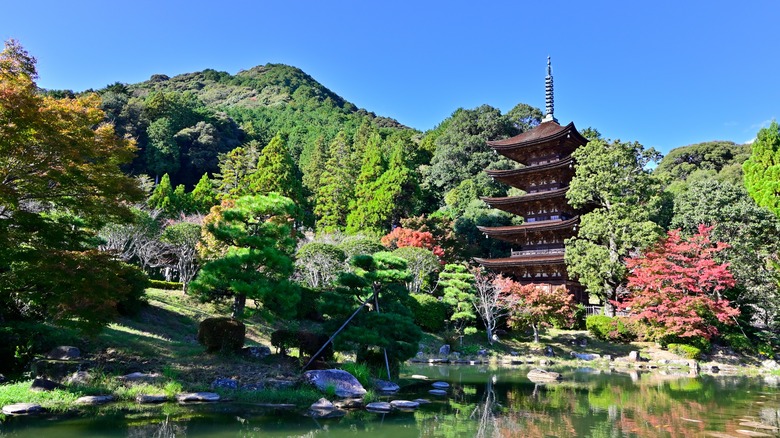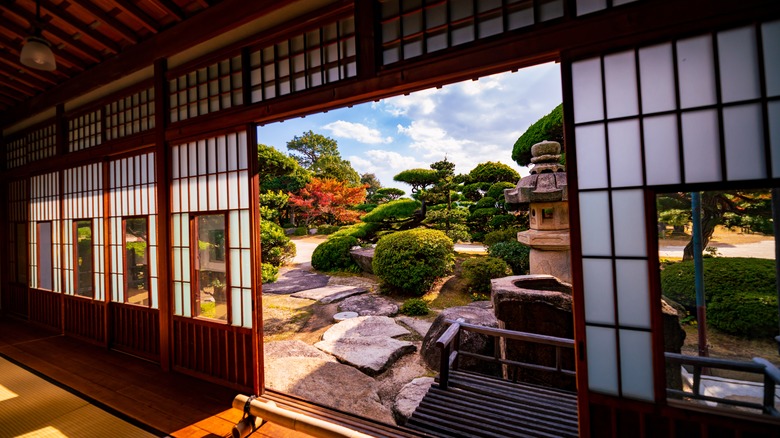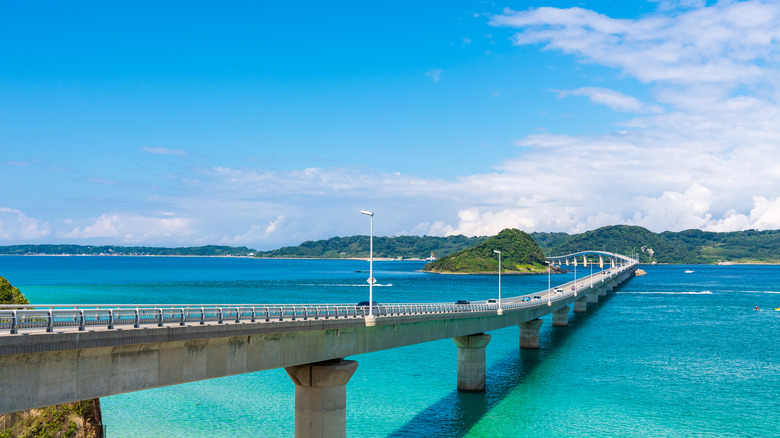Avoid Kyoto's Tourist Crush For This Gorgeous Garden Prefecture Seeped In Samurai History
Known as the "Kyoto of the West" but with smaller crowds of tourists, Yamaguchi is the offbeat and more budget-friendly Japanese destination alternative to Kyoto. The capital, Yamaguchi City, has a gorgeous walking garden, Sesshu Garden, in Joe-ji Temple, with idyllic photo opportunities no matter the season. This city is less than an hour from Hagi, where the powerful samurai clan Mohri of the Chōshū Domain built their castle under the Tokugawa shogunate. If that doesn't convince you to visit, Yamaguchi is not only a beautiful Japanese city, but it's also comparatively more cost-effective than Kyoto and has five UNESCO World Heritage sites. The must-see site is Hagi Castle Town — it is so well-preserved that you can explore it using an Edo-era map!
Accessible on the bullet train from major Japanese cities and close to the Ube Airport, Yamaguchi City is an ideal starting point for your historical Japanese journey. Pack your bag and prepare to be saturated in the rich Japanese history and culture.
Spend a day exploring Yamaguchi City before venturing out. Although the national treasure, the five-story pagoda Rurikōji Temple, is under restoration until 2025, the surrounding Kozan Park is worth a visit. On the grounds of the garden is the Rosan-do, a traditional teahouse where the Chōshū daimyo (feudal lord), Mori Takachika, made significant political decisions. After a day of wandering, relax in the hot springs of the Yuda Onsen district. You can enjoy a soak followed by some skewers and beers at a nearby izakaya, a Japanese tavern, or spend the night in one of the many inns in the area.
Roam the historical sites of the Edo period
Hagi is the crown jewel of the Yamaguchi Prefecture, where the Mohri clan built a castle protected by three moats and sturdy stone walls. Located in the northwestern part of Hagi, you can imagine the magnificence of the castle by visiting its ruins inside the current-day Shizuki Park. For a spectacular view of the city, hike to the peak of Mount Shizuki. Just outside the ruins is the Hagi Castle Town, where upper-class samurai and wealthy merchants lived. You can rent a kimono and roam the gridded wooden buildings. After exploring Japan's Edo past, head to the sandy white beach of Kikugahama, a 10-minute walk from the ancient town. You can dip your toes in the sea or relax and enjoy the sunset.
South of Yamaguchi City, Hofu is another historically significant city within the prefecture. The powerful Mohri clan relocated there after the Hagi castle was dismantled during the Meiji restoration. The gorgeous residence, the Mohri House, completed in 1916, utilizes traditional building materials with modern conveniences. The result is a sturdy and regal mansion built with the sought-after Taiwanese Hinoki cypress, an American generator, and one of the first telephone lines in the region. It's now a museum where visitors can explore the history and artifacts of the powerful Chōshū clan. Just over a mile from the Mohri House is the Hofu Tenmangu Shrine, one of the oldest temples in Japan dedicated to the god of learning. The majestic temple sits atop steep stairs, where studious Japanese go to make an offer to pass university entrance exams. The best time to go is during hanami in the spring, when plum and cherry blossoms are in full bloom, and during the Tanabata in July, when colorful streamers hang from bamboo trees.
Visit the port city of Shimonoseki in the west of Yamaguchi Prefecture
A mere half-hour away from Yamaguchi City, on the western coast of the prefecture, is the port city of Shimonoseki. There, you can cross the impressive Tsunoshima Ohashi Bridge that leads to the serene island of Tsunoshima. Explore one of Japan's oldest Western-style lighthouses and swim at the pristine beach that rivals the beach vacation island of Okinawa.
Shimonoseki is renowned for having the freshest seafood in Japan. If you visit the city's famous Karato Market to do some shopping for some cooking, pick fresh fish with clear eyes and shellfish with translucent flesh. If you're there to eat prepared food, a solid place to start your culinary adventure is a delicious and filling mixed seafood donburi — a fresh variety of aquatic fare over sushi rice. If you're feeling adventurous, order Yamaguchi's delicacy — the poisonous fugu (pufferfish) — safely prepared in a variety of styles, including as fresh sashimi or deep-fried.
There are other attractions near the fish market worth your time, too. To the southwest, morbidly, is the Kaikyokan aquarium. In the opposite direction, a short walk away, is the Akama Shrine, dedicated to the child emperor Antok, who was killed during battle in 1185. After visiting one or both of them, head to Hinoyama Park for a visit. The park is famous for the blooming tulips in the spring, donated by Shimonoseki's sister city, Istanbul. Hinoyama Park is also the best spot to see the Kanmon Bridge, which connects the land mass of Kyushu to Honshu, Japan's main island. After nightfall, grab a cold drink from a convenience store and enjoy a fantastic view of the city lights reflected in the waters.


